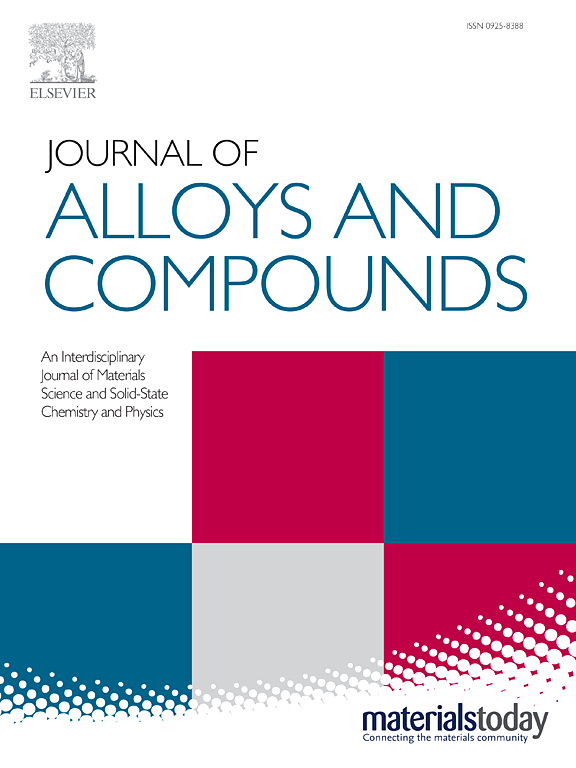Solid-state synthesis of Cr2AlC MAX phase from mechanically activated Cr/Al/C powder blends
IF 5.8
2区 材料科学
Q2 CHEMISTRY, PHYSICAL
引用次数: 0
Abstract
This study focuses on synthesizing the ternary-layered chromium aluminum carbide phase (Cr2AlC MAX) via a milling-assisted solid-state synthesis method. The elemental powders of Cr, Al, and C were processed in a two-stage process following mechanical activation (MAc) and annealing. Various parameters in both stages (such as milling time, annealing temperature, and process control agent) were examined to optimize the production of a high-purity Cr2AlC MAX phase. For this purpose, the elemental powders underwent MAc through high-energy ball milling for 1, 3, and 5 h and annealing at temperatures ranging from 700 to 1500 °C. The formation mechanism of the Cr2AlC phase was discussed based on detailed characterizations, including differential thermal calorimetry (DSC), X-ray diffraction (XRD), and Rietveld analyses. Additionally, the morphological properties of the synthesized powders were investigated in detail via scanning and transmission electron microscopy (SEM and TEM) techniques. The initial formation of the MAX phase was observed at 700 °C, and it was completed with a meager amount of chromium carbide phase at higher temperatures (99.7 % Cr2AlC at 1100 °C) depending on the synthesis conditions. In addition, a single-phase Cr2AlC MAX without a carbide impurity was achieved with the addition of SA, which caused an increase in the annealing temperature to 1300 °C.

从机械活化的 Cr/Al/C 粉末混合物中固态合成 Cr2AlC MAX 相
本研究的重点是通过研磨辅助固态合成法合成三元层状铬铝碳化物相(Cr2AlC MAX)。铬、铝和碳的元素粉末在机械活化(MAc)和退火后分两阶段进行处理。对两个阶段中的各种参数(如研磨时间、退火温度和使用工艺控制剂)进行了研究,以优化高纯度 Cr2AlC MAX 相的生产。为此,通过 1、3 和 5 小时的高能球磨和 700 至 1500 °C 的退火温度对元素粉末进行了 MAc 处理。根据包括差热定热仪 (DSC)、X 射线衍射 (XRD) 和里特维尔德分析在内的详细表征,讨论了 Cr2AlC 相的形成机制。此外,还通过扫描和透射电子显微镜(SEM 和 TEM)技术详细研究了合成粉末的形态特性。在 700 °C 时观察到 MAX 相的初步形成,根据合成条件的不同,在更高温度下(1100 °C 时为 99.7% Cr2AlC),MAX 相与少量碳化铬相一起形成。此外,在加入 SA 后,单相 Cr2AlC MAX 不含碳化物杂质,退火温度升至 1300 ℃。
本文章由计算机程序翻译,如有差异,请以英文原文为准。
求助全文
约1分钟内获得全文
求助全文
来源期刊

Journal of Alloys and Compounds
工程技术-材料科学:综合
CiteScore
11.10
自引率
14.50%
发文量
5146
审稿时长
67 days
期刊介绍:
The Journal of Alloys and Compounds is intended to serve as an international medium for the publication of work on solid materials comprising compounds as well as alloys. Its great strength lies in the diversity of discipline which it encompasses, drawing together results from materials science, solid-state chemistry and physics.
 求助内容:
求助内容: 应助结果提醒方式:
应助结果提醒方式:


